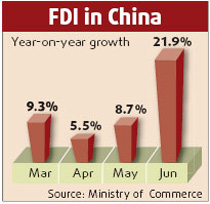The Chinese government has unveiled targets aimed at rejuvenating its old northeast industrial economies in the next 10 to 15 years. Plans were unveiled in a document published on Monday by the country's top planning body.
The northeastern region, including the provinces of Liaoning, Jilin, Heilongjiang and eastern Inner Mongolia, has an area of 1.45 million square kilometers and a population of 120 million, according to the document from the National Development and Reform Commission (NDRC).
"The region will be built into a major powerhouse for economic growth, an internationally competitive manufacturing hub, a national source of raw materials and energy, and an important base of grain and farm produce," the document stated.
Major firms in the region are urged to make breakthroughs in developing and producing heavy-duty machines, numerical-control machine tools, power plant equipment, automobiles and auto parts and railway equipment.
The document also called for further development of the electronic, information, biological, aviation and other hi-tech industries.
To optimize the economic structure and increase job opportunities, northeast China should "vigorously develop" the tertiary sector, including logistics, financial and commercial services, cultural innovation and tourism.
The document pinned the development of the economic axis on Harbin, Dalian and other coastal areas high on the agenda. The document suggested making the most of economic and technical cooperation with neighboring countries.
Per capita GDP in the region is expected to reach 21,889 yuan (US$2,880) in 2010, up from 15,318 yuan in 2005, while grain output is expected to grow an annual average of 1.9 percent to 94.5 million tons in 2010.
"Great progress is expected to be made in economic restructuring," with the service sector taking a 41-percent share of the economy and non-public sectors contributing 48 percent to the regional GDP in 2010.
In 2005, the proportion of tertiary industry in the economy was 38 percent in the region, while private businesses constituted 36 percent of the GDP.
In a drive to improve the region's innovation capabilities, spending on scientific research will be equivalent to two percent of the regional GDP by 2010, up from 1.3 percent in 2005.
"The efforts to revitalize northeast China and other old industrial bases are paying off," said Zhang Guobao, NDRC Vice Minister.
In the last three years, the northeast saw economic growth catch up with the national average, with grain output setting successive records and incomes steadily increasing, he added.
While projecting growth in key economic indices, the document also set binding targets for environmental protection and social development, in order to boost balanced and sustainable economic and social development.
Energy consumption for every 10,000 yuan of GDP must be reduced by 20 percent by 2010, while water consumption for per unit of industrial added value must be decreased by 30 percent, the document stated.
The region must expand its arable land to 25.53 million hectares from 25.48 million hectares in 2005 and raise the forest coverage rate from 34 percent to 38 percent.
The document put restrictions on exploiting natural resources in the Greater and Lesser Hinggan Mountains, the Changbai Mountain and some major wetlands and grasslands in the region.
Exploiting in the region's national natural reserves and forest parks is forbidden.
Water treatment facilities should be improved along the Liaohe and Songhua rivers to ensure safe drinking water.
In 2010, pension insurance must cover 32.7 million people throughout urban areas, compared with 25.5 million in 2005. The rural cooperative medical care system must benefit 80 percent of the rural population.
Registered urban unemployment must be kept under five percent, the document stated.
(Xinhua News Agency August 21, 2007)


